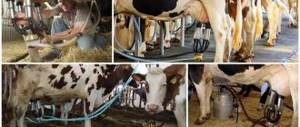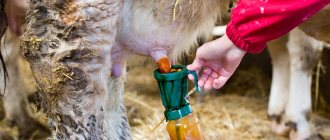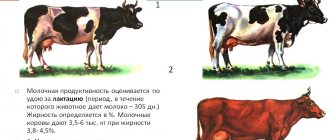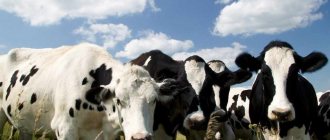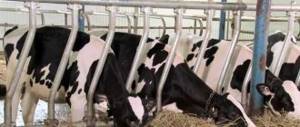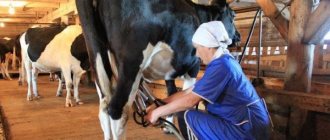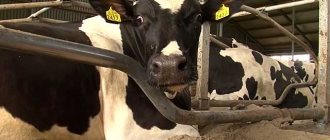Mechanical devices, which are designed to make work as easy as possible, are increasingly penetrating people’s everyday lives. This point concerns not only urban residents, but also rural ones. Because they are faced with hard work no less often, if not more often. An example of this is animal care. The milking machine for cows clearly demonstrates the simplification of operation. It makes life much easier for milkmaids. After all, now, in order to milk milk, human hands do not need to do serious and monotonous work; it is enough to connect the machine.
What are the different types of milking machines?
In order to choose the appropriate mechanism option, you need to know how they differ, what their fundamental features are and what they have in common. Thus, any home milking machine for cows has three characteristics: the milking mechanism, the discontinuity of this process and the location of the milk container.
There are two ways in which milking is done. The first is based on creating rarefied air or vacuum, that is, such a device will suck out the contents of the udder. The second performs mechanical squeezing of milk.
As for intermittent milking, there are three options:
- continuous process;
- suction in two strokes;
- three-stroke approach to milking.
The milk container can be located in close proximity and connected into one mobile mechanism or at some distance. Then the milk moves through a special channel that carries it to the container.
The principle on which milking machines work
Vacuum machines for milking cows are produced on an industrial scale. They bring the whole process as close as possible to how a calf sucks the udder. Only instead of his mouth there is a glass. Rarefied air is created in it, and the milk is sucked into the collector and then transferred to the container. Such a milking machine for cows has a significant advantage: it may not contain a teat gum, so it will not harm the udder.
A few words about the pump that creates the vacuum. It can be oil or dry rotary. The advantage of the first of them is its very quiet operation. The downside is its need for constant care. You need to constantly monitor the oil level and add it as needed. In addition, in winter, when the temperature drops, it may be difficult to start this mechanism.
A dry rotary pump does not require constant maintenance, but does not tolerate liquid getting inside. And also its operation is not silent.
Devices that operate on the principle of squeezing milk from the udder also create excess pressure. They are not produced in large quantities, but only by order and in single versions.
There is another nuance, which is how many teats are milked at the same time: two or four. Usually 4 suction cups work at once. To simulate natural milking of a cow by a person, a pair milking mechanism is used. In this case, two teats are milked alternately, and the change occurs every second.
Assembling a milking machine for cows with your own hands
make a milking machine for a cow with your own hands only if you have ready-made components ; the use of improvised materials is unsafe for the animal and is technically impossible. But, one way or another, in some cases, individual assembly is quite advisable, as it can reduce the cost of the milking machine.
In addition, factory equipment often combines the excellent quality of some parts with significant shortcomings of others. During self-assembly, it is possible to combine only high-quality components in one device.
A little information about the choice of other elements can help not only those people who planned to assemble a machine for milking cows, but also those who decided to buy this device, for a more thorough assessment of the characteristics of all the proposed options.
Collector and pulsator
Working in a “pulsator-collector” pair, this equipment is designed to create vacuum and pressure . It is more economically profitable to use improved pulse collectors, which are more efficient and cheaper.
Hanging knot
When choosing the elements of a hanging assembly, it is very important to take into account certain features. Glasses made of transparent material make it easier to control the process. The pad that is adjacent to the udder must be made of neutral rubber that is safe for the animal (one of the best options is rubber material).
Silicone suction cups firmly secure the glasses and make it possible to work in three-stroke and gentle (at reduced pressure) modes.
Bucket
Buckets for milking cows are made from different materials:
- made of food-grade plastic - cheap, do not rust, easy to clean, but short-lived;
- made of stainless steel - durable, but expensive;
- aluminum - not subject to oxidation and lightweight.
How is intermittent milking organized in the machine?
The most unclaimed type of milking is continuous. He doesn't take rest breaks and his nipples don't relax. This is not very beneficial for the animal.
Nowadays, two- or three-stroke milking machines are in greater demand. For cows, the latter type is more suitable because it imitates the natural sucking of the udder by a calf. When periods of work and rest alternate, the first action in this machine is milking, then the nipple is compressed. The last action is rest, when the nipple relaxes and returns to its natural state.
There is no relaxing moment in a machine with two milking strokes. This unit is characterized by slow milking. It does not develop a stable reflex to let go of milk. In addition, this method increases the risk of developing mastitis.
Rules for milking a cow using a machine
An animal that is not familiar with the mechanism must be accustomed to it gradually. If the cow was initially milked only by a person, then she is introduced to the sound that the machine makes. To do this, it is simply turned on idle during manual milking. Over time, you can replace your hands with the cups of the device.
If the cow has never been milked, that is, she calved for the first time, then it is better to immediately introduce her to mechanical milking. This way there will be no need to retrain.
The machine milking process consists of the following stages.
- Rinse the udder with warm water and dry it with a soft cloth.
- Give a light massage to increase milk flow.
- Milk a small stream from each nipple. This point helps to check the quality of milk.
- Make sure that the cow's milking machine is in good working order and clean.
- Place the glasses on the nipples and check that they fit snugly. This will be indicated by the absence of air hissing during milk suction.
- If the glasses fall, then the process must be stopped and put on them again.
- Some cows need additional milking. At the end of the process, take the manifold with your hand, pull it down and lift it again. With the other hand, massage the udder.
- Once the flow of milk stops, milking must be stopped and the glasses removed.
- Wipe the udder with a towel and lubricate it with Vaseline cream.
- Rinse the device with clean and warm water, and then with a disinfectant solution.
Purchase of spare parts and repairs
Like any mechanism, a milking machine for cows can break down. Spare parts for it can always be purchased in specialized stores. They sell everything from teats and hoses to teat cups and pulsars.
Nipple gum requires special attention from buyers. Because it has direct contact with the animal's body. It is very good if this part is made from high-quality raw materials, for example, rubber. If recycled materials are used in its production or impurities are added, then it very quickly loses its elasticity. Therefore, microcracks appear in it, which contribute to the spread of pathogenic microflora and harm the health of the cow. In addition, such rubber bands quickly break down and require frequent replacement.
Review of popular models
Let's look at the most popular models:
- MDU-5 is used if the population does not exceed 5 units. There is a modification for milking goats (MDU-5k). Productivity – suction 200 l/min. The unit is 2-stroke, the pressure in the nipple space is 50 kPa. Weight – 15 kg. Cost - about 20 thousand rubles.
- Melasti is a Turkish milking machine. 2-stroke, portable, with pulsator (60 pulses/min). Designed for small numbers of livestock: milks up to 12 cows per hour. Can volume – 20 l, weight – 44 kg. Costs 25-30 thousand rubles.
- Delaval will be useful if the livestock is 3-5 units. The DeLaval MMU modification allows you to milk 2 cows at the same time. Working pressure – 50 kPa. The glasses are plastic, the hoses are transparent. The volume of the plastic transparent can is 30 l. This Swedish unit has two drawbacks: noise during operation and cost (about 70 thousand rubles).
- AID-2 has high productivity: 10 cows/hour. Can also be used for serving sheep and goats. Equipped with wheels, transparent tank. Used for small households.
- “Burenka” is a milking machine for goats. The unit is portable, silicone cups, made of materials safe for health. When working, it does not make noise and does not frighten the animal. Price – about 400 dollars.
- “Dairy Farm” is equipped with silicone cups and a 22.6 liter can. Serves up to 10 cows per hour. Weight – 47 kg. There are many modifications.
- "Farmer". Mobile unit equipped with two wheels. Intended for private use: milking speed – 10 cows/hour. Vacuum pump type – dry, creates a pressure of 48 kPa. Aluminum glasses. Can volume – 20 l, weight – 25 kg. You can buy a milking machine for 21-23 thousand rubles.
- The “milker” operates silently and does not require manual milking, since the glasses and hoses are transparent and mobile. Pressure – 40-50 kPa. The capacity of the can is 22.6 liters, weight is 52 kg.
- "Volga" is a 3-stroke unit with a pulsator. The glasses, like most of the parts, are plastic. Capacity of the container – 20 l. Price - on average 4 thousand rubles.
Be sure to read: Homemade tedder rake for walk-behind tractor
“Milkline”, “Milka”, “Doyushka” are very popular. The design of the Doyushka milking machines: the engine provides a 2-stroke mode (64-70 strokes/min), cups with a transparent silicone insert, transparent hoses, it is impossible to milk two cows at the same time. Best suited for small numbers of animals with developed udders. What is the price? About 18 thousand rubles.
Range
The first on the list is the Burenka milking machine for cows. It has a quiet sound that does not irritate animals. From the reviews of people who use this mechanism, it is clear that there is no need to manually milk the milk. The nozzle is lightweight, and the elastic band is made of high-quality silicone. All containers that come into contact with milk are made of stainless steel.
Another brand, “Moya Milka,” has a wide range of different devices. Therefore, the consumer has the opportunity to choose the most suitable option.
The “Farmer” milking machine for cows is fully equipped. You can start using it immediately after purchase. The power of the unit allows you to milk 8 cows in 1 hour.
The Zorka mechanism, which completes this list, uses innovative technologies and offers an option in which the elastic band is excluded. Transparent collector tanks allow you to visually observe the milking process.
There is a lot of competition in this market. Therefore, all manufacturers strive to improve the quality of their products.
Milk pipeline
For large farms with more than 50 cows, the most profitable option is milking machines with a milk pipeline, which allow not only to increase production, but also to save on rather expensive milking equipment. One of the most popular milk pipelines on the Russian market is Siberia.
Milking equipment is manufactured for the simultaneous milking of 50 to 400 cows while being kept tied in a barn. The standard package includes:
- Supply glass pipe or stainless steel pipe,
- Impact resistant pipes,
- Three-cycle machine for paired milking,
- Vacuum water installation with a tank of one hundred liters,
- A tank of fifty liters for the initial reception of milk,
- Vacuum valve between pipes and milk receiver.
The purpose of the milk pipeline is not only milking, but also transportation of milk to a special department of the plant, measurement of one-time milk yield from a cow, filtration, pumping of the already filtered product into a container for temporary storage.

